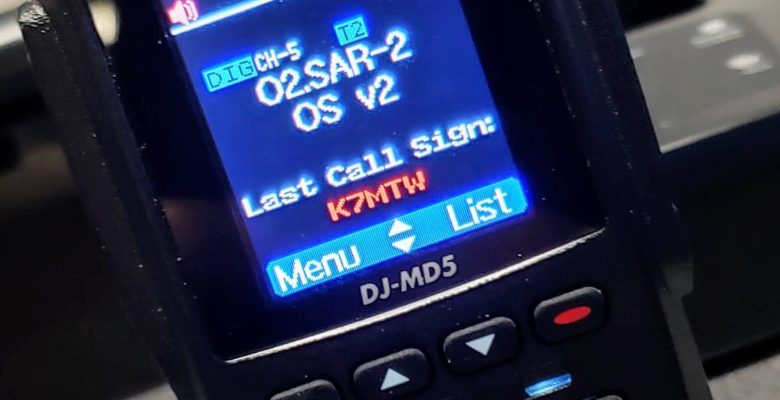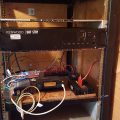Square Waves #2 – Talkgroups
By: Will DuBois, N7DUD
In the previous post I covered the basics of DMR and what makes it different from analog radio. If you haven’t read that, I would highly suggest starting there.
In the analog world, we normally think of channels typically being separate frequencies. There is a reason we use a different term for DMR: Talkgroups. This can get a little complicated, so we will break it down one step at a time.
(In my previous article I covered a term called “Time Slots”. This is how one repeater can carry two conversations at the same time. For the sake of discussion, we are going to ignore time slots for now.)
Say you have a business that has 3 groups of radio users. You might have supervisors, security and housekeeping. Traditionally you would need to have one channel (frequency) for each group if using simplex, or one repeater for each group if using repeaters. DMR allows all 3 groups to share ONE frequency (or one repeater). This is done by assigning each group a “Talkgroup ID Number”. This ID# gets transmitted when the user keys up, and only radios that are listening for that talkgroup hear the transmission. (Obviously this means that if group 1 is talking then group 2 will get a “busy” signal and must wait to use the channel.)
Expanding on our example, say you wanted to have an “All Call” or “Emergency” group that all users would hear regardless of what talkgroup they were currently using. This can be done by creating another talkgroup ID and programming all the user radios to always monitor the “Emergency” talkgroup IN ADDITION to the talkgroup they are currently using. (This feature is called a “Group List” or “Receive List” in most DMR programming software and is a very powerful tool for us in the amateur world.)
Now we will add time slots back into the equation. The business has expanded, and the housekeeping group uses a lot more airtime than they did before. We can move the housekeeping group to time slot 2 and leave the other groups on slot 1. Remember, this is still only using ONE DMR repeater, since DMR repeaters have 2 time slots on a single frequency. This would allow the business users to double their airtime capacity with zero additional hardware or cost. Note that time slots are totally independent of each other, so if a housekeeping user is transmitting, a supervisor could also be transmitting since they are still using time slot 1.
An additional benefit of talkgroups I want to cover is routing. You can set certain talkgroups to be local to the user’s repeater while setting other groups to tie multiple repeaters together. For example, a security company that works at multiple remote sites could have a talkgroup for each site, and another talkgroup that was “City Wide”. The user would just change to the wide area talkgroup and when they key up they would be heard at all of the sites.
I have intentionally chosen to use a business model for a couple of reasons. First, none of the group names I have used here exist in the amateur world to reduce confusion, and secondly, I wanted to highlight how we use things differently than a business user.
Ok, now onto the fun stuff, what amateurs do with talkgroups. I am going to speak in general terms since there are a few different DMR systems out there. Generally speaking, the amateur world uses talkgroups for geographic grouping and topic grouping. For example, you will see “Statewide” talkgroups, “Metro Area” talkgroups and even talkgroups for entire countries and some dedicated to ARES type use. The beauty of DMR is that you can usually access any of these from anywhere in the system. You aren’t locked into only using your state talkgroup for example, you can bring up another statewide talkgroup and talk to a friend in their home state.
Another really cool feature with DMR is the ability to monitor multiple talkgroups without tying them all together. For example, in the Allstar world, if you connect to two different nodes, all traffic passes to all connected nodes. In DMR, you can choose which talkgroups you want to monitor, without talkgroup “A” transmitting on talkgroup “B”.
Another way to think of talkgroups is as a “menu” to choose from. You can have many turned on as you want, and you will hear all of the traffic on those talkgroups, but they aren’t connected to each other. Also, once you decide to key up on a talkgroup, the system automatically mutes all of the other talkgroups for a few minutes each time you key up to prevent them from interfering with your QSO.
Again, all of these rules are time slot specific, so you could have 5 talkgroups set to be active on Time Slot 1, and 5 different talkgroups active on Time Slot 2. Talkgroups can be set to the “Full Time” (aka: static) or “PTT” (aka: dynamic or user activated). The names are fairly self-explanatory. Full time talkgroups are always on, and PTT talkgroups must be activated by a user. For example, many DMR repeaters have their home state talkgroup set as full time so you can always reach other DMR repeaters in your state. Say you travel out of state and want to talk back into Alaska, you would just have to PTT the Alaska statewide talkgroup on whatever DMR repeater you are using, and you would be able to talk back into Alaska.
If you remember back to the business models above, you might be thinking that you won’t hear anything on a repeater unless you have the talkgroup programmed in your radio ahead of time. This used to be the case, but now most DMR radios have a feature called “Digital Monitor”. This mode has two really cool features. First, it allows you to hear all activity on a repeater regardless of talkgroup. Second, it allows you to lock onto an active talkgroup and respond without having to find the talkgroup in your radio. This feature can be turned on for a single time slot, or for both time slots. This also prevents you from accidentally interrupting someone else who is using a particular time slot.
One additional comment regarding talkgroups: When operating in simplex mode, all the radios must be programmed to use the same talkgroup and color code. (Color codes in DMR are like CTCSS in analog, it’s just another way to segregate repeaters from each other if re-using the same frequency in a coverage area. All you need to know about color codes is to use the one listed for the repeater you want to access)
The most common “standard” for DMR simplex is Talkgroup #99, Slot 1, Color Code 1. Also, don’t use DMR on the analog simplex calling frequencies as it will sound horrible to analog users.
Whew. That’s enough for now. This is probably the most confusing part about DMR. I tried to make it easy to follow and understand. If you are interested in DMR and have questions, feel free to reach out to dmr@kl7aa.org.
Will – N7DUD



